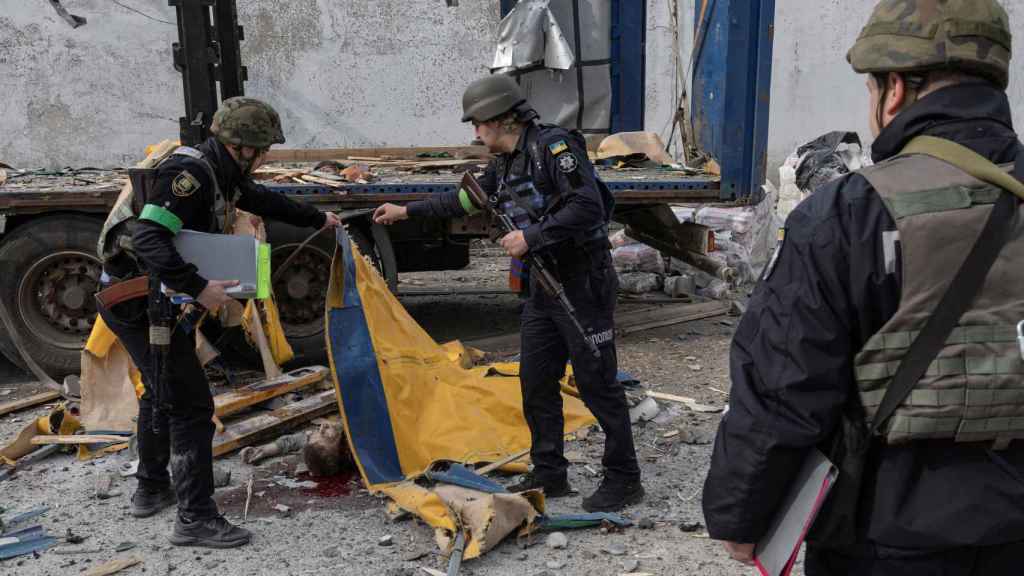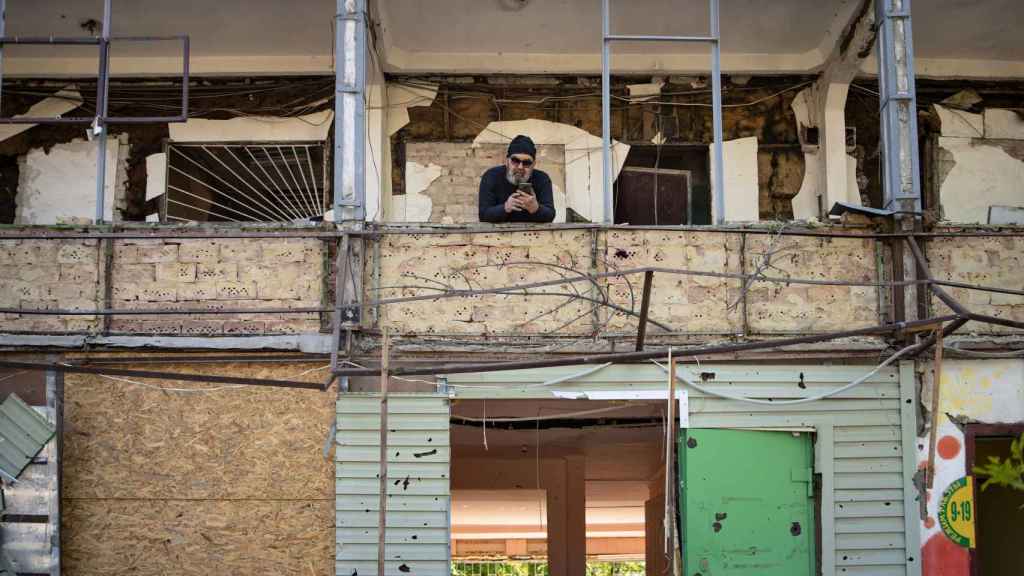On April 8, 2022, Russia put Kramatorsk on the international media map with a savage attack on its train station just as hundreds of refugees awaited the next convoy to flee west. The two missiles that fell on the building completely destroyed it and caused the death of 59 peopleincluding several children. The images were so reprehensible that Russia immediately wanted to blame Ukraine for a “self-attack”, without ever explaining why Ukraine had decided to attack the nerve center of its military organization in Donbas.
Because exactly that is Kramatorsk. The center of Ukrainian defense on the eastern front during these four and a half months. The place where the troops and weapons from the west arrive and from which those soldiers who need to be replaced or those families who can no longer stand the continuous bombardments to which Russia has been subjecting the city and its neighbor Sloviansk leave for weeks. Kramatorsk is the most coveted piece right now by Putin and his army, but it is still a distant piece. Even Sloviansk is closer for those coming down from Izium on the E40.
The battle for Kramatorsk promises to be bloody and key in the future of this war. A battle that can confirm the positive trend for Russia or can turn it around and balance forces again. At the moment, it seems that what the invading army is trying to do is attack from two flanks, but it is doing so slowly, like everything since the beginning of the “second phase” of the “special military operation”. After having taken over practically the entire Lugansk region, part of the occupying army rested in Lisichansk while the rest advanced towards the Siversk-Artemivsk axis (former Bakhmut).
Lack of resources prevents many victims from leaving towns like Kramatorsk.
Around this axis await the Ukrainian troops who managed to free the siege of Sievierodonetsk. One possibility would be to try to avoid direct engagement by attacking Artemivsk directly in order to march on Kramatorsk from the south. The other is to go to Siversk, further north, and take control of the T0513 road. Strictly speaking, Siversk is not a major military target, it is not a big city and it is protected… but that road gives direct access to Sloviansk to the east… and to Artemivsk itself to the north.
The touchstone to the current state of the Ukrainian defense
Russia still wants to apply the roller tactic: advance very slowly, open the way with the artillery and then send your few troops to conquer lands generally turned into scorched earth. Destroyed cities that are taken in order not to get out of the plan and not to lengthen the lines of communication too much. This parsimony avoids risks and gross mistakes like those at the start of the war, but it also gives Ukraine time to move its troops in the way that best suits it, stalling the war and prolonging it.
[Europa se prepara ante una posible III Guerra Mundial: vuelta al carbón, acopio de víveres…]
What we need to know right now in order to make the most accurate assessment of each army’s capabilities is how this tactic is going to work in the Donetsk region. In Lugansk it worked well, but we are talking about very few kilometers of progress in quite some time. Will Russia be able to take the Siversk-Artemivsk axis in the next few days? Will it be the product of its military superiority exclusively or will there also be tactical withdrawal movements by Ukraine?
There are reasonable doubts about the situation of the Ukrainian army that can be dispelled immediately. We don’t know how they got out of those forced withdrawals, how many troops have been lost along the way or, above all, how much equipment. We don’t know if they will face the Russians in a dream position or from the wrong foot. Have they really become strong on that axis or have they simply had no choice but to distribute themselves along that road when they are forced to back down?
The latter would be bad news for Ukraine and for the West. If the defense of Artemivsk and Siversk does not live up to expectations and these cities end up falling easily, the road to Kramatorsk and Sloviansk would be clear. Its conquest sometime in the summer would leave the Russians too close to the Dnieper River, both to the city of Dnipropetrovsk, the true industrial center of the country, and to Zaporizhia, one of the main objectives at the beginning of this war.
European impatience for a war already won
Not only that. Yes Ukraine fails to defend its eastern cornerstones, where his best men are supposed to be fighting, and if he does not manage to advance towards the city of Kherson and the HIMARS do not cause more damage to the Russian infrastructure, the pressure that he is going to receive at least from France and Germany is going to be terrible. The situation of Boris Johnson, his main ally, in the United Kingdom, will not benefit him either if the Conservative Party finally forces his departure.

Ukrainian police cover the body of a man killed in Russian bombing in Kramatorsk.
Reuters
Europe will not want to be cold in autumn or winter. He could sacrifice himself in exchange for results, but those results have to come and, in this sense, Putin knows that time is on his side, even more so with the Ukrainian ports blocked and dozens of countries waiting for a grain that is not going to arrive, causing a more than likely famine according to UN warnings. Ukraine needs to show Europe that her war makes sense and that these sacrifices will result in a more just and balanced peace.
In the end, The West has already won this war. You only have to worry about a possible Ukrainian collapse, but this seems unlikely. Since February, both NATO and the EU have increased their living space, they have further cornered Russia, and Russia has sacrificed itself in a war that, in the taking of Lugansk and the southern ports alone, has already cost some 35,000 lives. , more than 100,000 wounded and prisoners, and military spending inevitably reminiscent of what the Soviet Union assumed in Afghanistan for years until it had to leave by legs in 1989. Two years later, the country collapsed and disappeared as such.
[750.000 millones: el coste del nuevo ‘Plan Marshall’ con el que Europa quiere reconstruir Ucrania]
What exactly does Russia want?
Here we enter, then, in a vicious circle: Ukraine is resisting, to a large extent, and apart from the enormous courage of its soldiers, by Western aid. Now, those western aids depend on how long you hold out. If he can keep the Russians out of Kramatorsk or open a road into Kherson, he’ll buy time. If, on the contrary, the withdrawals continue or, directly, the Donetsk region falls, it is very likely that its partners will urge a ceasefire that is not too punitive for their interests.
The problem here is not only that Zelensky is against any peace agreement that does not include the total withdrawal of Russian troops from Ukrainian territory (something that, obviously, it is not going to achieve without a previous military victory), but we still know very well what Russia wants. Its delegate to the United Nations Security Council, Nikolai Patrushev, declared on Tuesday that the objective was still “to protect civilians from the Ukrainian genocide, denazify the country, destroy its army and force it to take a position of neutrality before the NATO”.
[La caída de Lisichansk otorga a Putin su primer gran triunfo en Ucrania y deja el Donbas a sus pies]
All this can only be achieved by changing the government… and if we have spent months seeing how Russia can take over Siversk or Artemivsk, it is useless to talk about kyiv. It is an objective, in principle, completely unrealistic, and that contradicts what was said in April: capture of Donbas and subsequent union of the region with Transnitria through a corridor that crosses the entire coast of the Sea of Azov and the Black Sea. Here, every senior Russian official comes out and says something different and it doesn’t seem to matter. That does not facilitate a diplomatic solution at all… and the military one can take years at this rate. Unless in Kramatorsk we see something out of the ordinary. For better or for worse, of course.













Add Comment